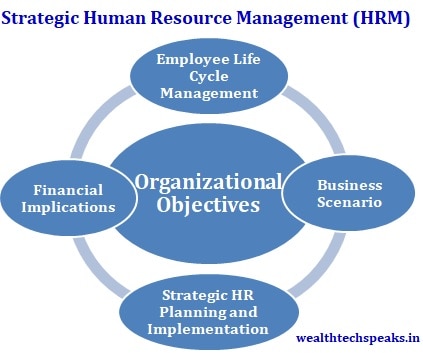
Employee Life Cycle Management Modern Perspective
- Posted By Amritesh
- On April 10th, 2018
- Comments: 4 responses
Human Resource Management (HRM) encompasses the Employee Life Cycle Management in an organization. Human Resource Personnel play a major role in facilitating the Employee Life Cycle process. Employee Life Cycle Management is the identification of stages an Individual goes through during his/her tenure in any organization. Human Resource Department has the role of enabling the entire process and ensuring that the transition into each stage is well defined and structured. However, in the changing Business Scenario and Economy, each stage of the Employee Life process has assumed greater significance.
Stages in Employee Life Cycle Management
Employee Life Cycle process kicks in as soon as Recruitment process is initiated within an organization and continues as long as an employee continues to be part of an organization. The cycle transits through various stages in between the recruitment and exit process. In the modern scenario each stages of Employee Life Cycle Management has gained critical significance. The process has evolved over a period of time to become one of the strategic tool for the organization to manage the Human Capital.
Recruitment
Employee Life Cycle Process sets in with the initiation of the recruitment process. Recruitment is a process of hiring a person in an organization to perform a specific role. The hiring exercise is undertaken to meet the specific Human Capital requirement in the organization. Recruitment involves various steps such as identifying the nature of vacancy, job profile, creating job description, scouting of talent, shortlisting, selection of an Individual.
Previously, the hiring was primarily concerned with closing of any opening in the organization. However, the scenario has changed and now it is very important to hire the right talent for the organization. Recruitment Team/Recruiters have to ensure that they not only hire a person who is capable of performing the assigned duty, but also has the ability to adopting to the Company culture and practices.
Thus, Job-Fit hires tend to stick with the organization for a longer period thereby reducing the turnover cost for an organization.
Employee Integration
Once an employee joins, HR has to induct the individual in the company fold. Post onboarding, Human Resource Management needs to impart key trainings to the individual related to the job profile. They also need to identify the training programs aimed at development of the core competency skills of an Individual. Training and Development is aimed at alignment of skills and expertise to meet Organizational objectives.
HRM has the task to ensure that the Individual is completely aware of the organizational policies and expectations from him/her as an employee. This is essential for organization to achieve its goals and provide career growth opportunity to the employee.
Performance Management
One of the most critical aspects of managing Employee Life Cycle is the Performance Evaluation. Performance Measurement is no longer restricted to being an annual exercise, rather it is an ongoing process in the organization. This would help the Employee as well as the Manager to assess the performance better on a regular basis, identify the gaps and look at possibilities to address the same.
Career Planning
Performance metrics helps to measure the performance of the Employees. However, without a proper Career Planning it would be hard to retain the Key Performers in the organization. Human Resource Management (HRM) must have a structured Career Progression System to monitor the career growth of the Employees in the organization.
Career Succession Plan provides a structured roadmap to the employees and helps them understand their roles better.
Retention
The biggest challenge is to retain the high performers or niche skilled employees in the organization. Competitors, Peers always target such employees with lucrative offers. Thus, Talent Management team has to innovate platforms, ideas which are crucial to retain key talents in the organization.
The approach has to take into consideration the policies adopted by the competitors before devising a Retention Plan.
Exit/Retirement
Employees may exit an organization on retirement, or for better opportunities, compensation, or for any other personal reason. Employee Life Cycle Process includes activities related to completion of exit formalities. Completing release formalities, conducting exit interview may be a standard procedure. However, the actual task post completion of the Exit formalities is to analyze the Exit Interview response in order to identify gaps in the organizational practices.
Anticipate any more potential exits in the near future and take adequate steps to retain such key talents.
Boomerang
Former Employees may have left the organization, But keeping in touch with such employees is always beneficial. It may happen that they have acquired new skills, expertise which may be required on an urgent basis in the organization. Thus good rapport will facilitate consultation and help in getting them on board again.
Employee Life Cycle Management has evolved as a Strategic HR Tool which includes multiple subsets. Employee Life Cycle Management includes the entire Human Resource Management (HRM) process which could impact the performance and success of an organization. Thus considerable time and effort should devoted to each stage of Employee Life Cycle process in order to build a HRM base which would withstand the onslaught of fast changing business scenario.







